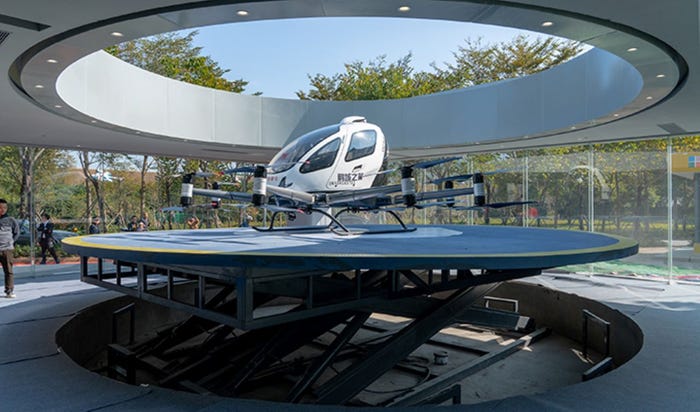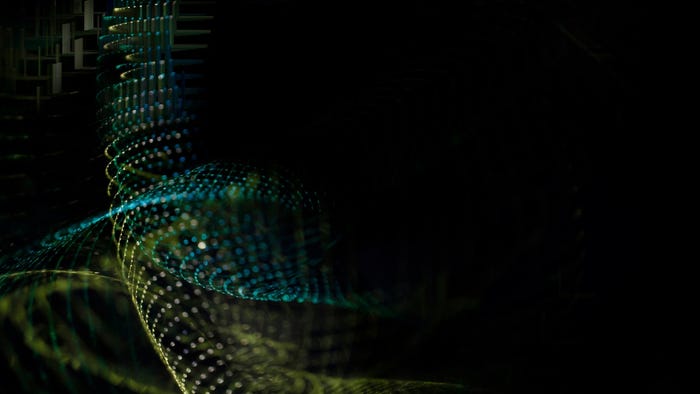IoT Product Roundup: MIT, Siemens, Sateliot and MoreIoT Product Roundup: MIT, Siemens, Sateliot and More
The latest product announcements from the world of IoT

From MIT’s new small-scale receiver to extend the battery life of IoT sensors, to Siemens’ collaboration with Cognosos on asset tracking in health care, here are some of the latest product announcements from the IoT industry.
MIT Develops Small-Scale Wake-Up Receiver to Extend IoT Sensor Battery
MIT researchers have designed a new, small-scale wake-up receiver to improve the battery life of IoT sensors. The receiver is one-tenth the size of typical devices and runs on only a few microwatts of power.
With IoT devices and the batteries that power them, becoming increasingly small in design, developing compatible wake-up receivers that keep the devices in low-power sleep mode has become an important task for engineers.
By using terahertz waves, the team from MIT was able to create a suitable small-scale receiver. Terahertz waves are around one-tenth the length of radio waves, allowing the device to be smaller.
Applications for the receiver include environmental monitoring microbots, which are often deployed in small and hard-to-reach areas.
“By using terahertz frequencies, we can make an antenna that is only a few hundred micrometers on each side,” said Eunseok Lee, lead author of the study. “This means we can integrate these antennas to the chip, creating a fully integrated solution. Ultimately, this enabled us to build a very small wake-up receiver that could be attached to tiny sensors or radios.”
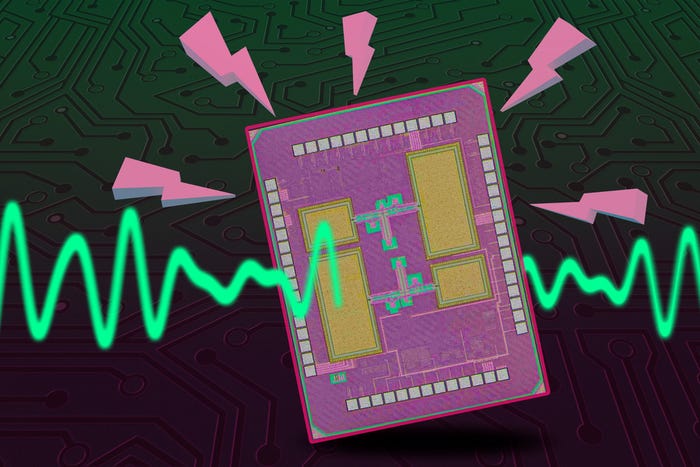
Siemens Healthineers Selects Cognosos to Power Hospital Real-Time Location Services
Siemens Healthineers has selected Cognosos to provide real-time asset tracking and intelligence for its network of hospitals and health care facilities.
Designed to track the location of critical medical assets, Cognosos’ technology enables users to streamline operations, avoid unnecessary costs and create greater transparency across a health care facility.
“Enhancing our customers' ability to optimize operations and maximize productivity with real-time, room-level visibility of their assets using easily deployed, lightweight infrastructure will be a significant workflow and efficiency driver for healthcare providers,” said Ben Sperling, Siemens Healthineers vice president.
Cognosos’ real-time location services (RTLS) use wireless network technology and AI-enabled location tracking to provide widespread, consistent asset visibility.
“This collaboration will enable hospitals to quickly and easily implement RTLS while providing the intelligence needed to accelerate processes and streamline operations within their facilities,” said Braxton Jarratt, Cognosos CEO.
.webp?width=700&auto=webp&quality=80&disable=upscale)
Seoul Robotics Unveils 3D-Sensing Intersection Traffic Solution
Seoul Robotics has unveiled its new end-to-end intersection traffic solution, which it says “transforms raw 3D data into actionable insights for traffic controllers.”
By leveraging 3D imaging, the company says its solution can process and analyze real-time data, improving pedestrian and driver safety. Data is collected using Seoul Robotics’ 3D perception platform, Sensr, which leverages deep learning AI to track, detect and identify vehicles, bicycles and pedestrians, creating a digital twin of the road and providing traffic controllers with an accurate, up-to-date image of the environment.
“Cities have been struggling with outdated traffic systems that lack intelligence and essentially ignore the most unpredictable and vulnerable road users,” said William Muller, Seoul Robotics’ vice president of business development. “Our latest solution bridges the gap by providing cities worldwide with the tools to actually improve traffic operations. With instant access to vital information and advanced detection for not just vehicles, but also pedestrians and bicyclists, cities can now take bold steps to revolutionize urban mobility and ensure the safety of their communities.”
.png?width=700&auto=webp&quality=80&disable=upscale)
Sateliot Launches First 5G Satellite for Constellation to ‘Democratize IoT’
Sateliot has launched what it says is the “first-ever 5G standard low-earth orbit satellite to democratize access to the Internet of Things.”
The satellite, called The Groundbreaker, was launched aboard a SpaceX Falcon 9 from the Vandenberg U.S. Space Force Base in California. The satellite weighs 22 pounds and takes around 90 minutes to complete a full orbit of the Earth, with the company saying it can provide coverage to an area three times the size of Texas.
The GroundBreaker is the first of a 250 LEO satellite constellation, designed to work as cell towers offering connectivity for IoT devices from space. Under the service, users can switch from terrestrial to non-terrestrial 5G networks, with no need to purchase any extra hardware, such as antennas or modems.
The constellation is hoped to provide surveillance services to industries including the maritime, railway, aeronautics and automobiles, as well as provide 43 million Americans access to safe, potable water from wells and rivers.
Parsec Automation’s New Manufacturing Execution System
Parsec Automation has announced the wide release of TrakSYS 12, the latest iteration of its manufacturing execution system (MES) software. The platform features expanded IIoT capabilities and is designed to improve management of manufacturing operations across the entire supply chain.
"We highly recommend that all our customers update to TrakSYS 12 to take full advantage of all that it has to offer,” said Bill Rokos, Parse’s CTO. “The new features offer significant advancements in terms of functionality, efficiency, and user experience…our chief priority was anticipating and addressing the challenges faced by manufacturers — both today and tomorrow.”
The update also includes Connect, a new feature designed to enhance interoperability, offering a simplified means of building interfaces between different systems and TrakSYS for data exchange.
.png?width=700&auto=webp&quality=80&disable=upscale)
Aras Launches Cloud-Based PLM on Microsoft Azure Marketplace
Aras has made its low-code product lifecycle management (PLM) platform available in the Microsoft Azure Marketplace.
Aras’ platform is designed to help companies move PLM to the cloud, an increasingly important capability as industries see the acceleration of digital transformation.
“Through our Microsoft relationship, we’re delivering expanded deployment options for our customers,” said Roque Martin, Aras’ CEO. “Enabling them to take more advantage of their existing Microsoft Azure agreements to use our SaaS-based offering. Aras Enterprise SaaS has the power to meet organizations’ most complex business requirements.”
“As cloud-based PLM solutions gain market traction, the enabling technologies have evolved substantially,” said Peter Bilello, CIMdata CEO. “Aras Enterprise SaaS is setting a new standard for next-gen PLM. It offers full PLM functionality that’s suitable for companies with complex products and a high design content – and it’s fully configurable with no limits on the applications that can be developed or the underlying data model.”
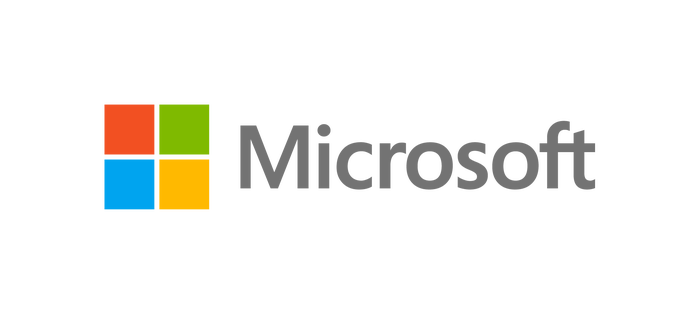
Dracula Technologies’ New Division Brings Organic Photovoltaic Technology to Indoor IoT
Dracula Technologies, an energy harvesting company, has launched a new division to “facilitate the transition to organic photovoltaic (OPV) technology for indoor IoT applications.”
The new division, dubbed the Layer Solutions division, will develop a series of products powered by Dracula's OPV Layer technology, which harnesses indoor light to create energy, eliminating the need for batteries and lowering costs.
"Energy harvesting can be challenging, but our team has years of unique experience in integrating the different building blocks required to power a device," said Brice Cruchon, Dracula’s CEO. “Our new Layer Solutions division brings this expertise to customers, making it easier to transition to OPV to make their dream products come true, and turn great ideas into fully functional products in just a few weeks."
Specifically designed for IoT devices, Layer is an OPV module that generates energy from ambient light. Smart home devices integrated with Layer technology are automatically charged by standard indoor lighting, eliminating the need for battery power.

Comau’s Mobile Robotics Platform Supports Solution to Accelerate Cobot Uptake
Comau is developing a new mobile robotics platform intended to support the uptake of collaborative robots (cobots) throughout manufacturing industries. The solution combines Comau’s expertise in cobots and associated IoT technologies, consisting of a robotic arm mounted on an autonomous, battery-powered autonomous mobile platform.
Designed to be applicable across all production areas in a manufacturing plant, the platform will also be integrated with Comau’s digital infrastructure, providing “visual feedback” for pick-and-place operations via the robotic arm’s integrated vision system.
The design is currently being used in three European projects. One of these is part of DIMOFAC (Digital Intelligent MOdular FACtories), an EU initiative established to help companies implement smart factory architecture. Under this scheme, Comau’s platform is being used for pick and place and warehouse automation tasks within a machining scenario.
The PeneloPe Project, an EU scheme developing a closed-loop digital pipeline for modular manufacturing, is using the platform for glue dispensing and quality inspection.
It is also being used in the EU initiative ODIN (Open-Digital-Industrial and Networking) to move and manipulate parts in automotive assembly, with the aim of “demonstrating the technical and performance feasibility of collaborative robotics on the factory floor.”
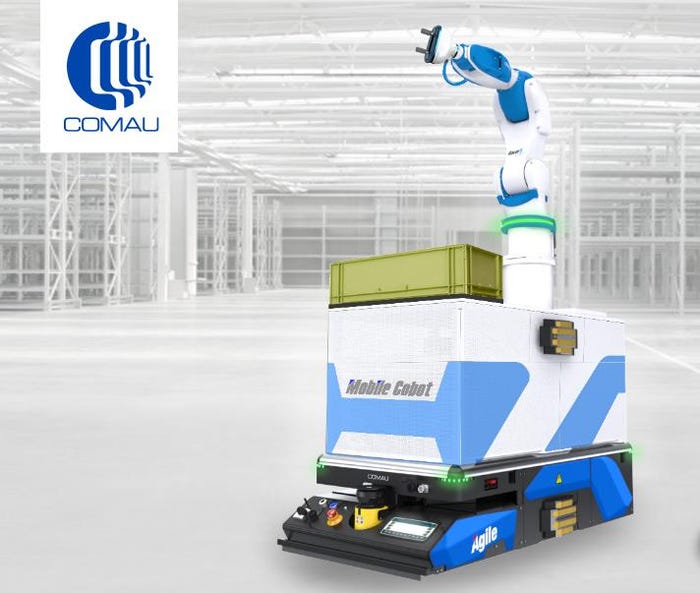
About the Author
You May Also Like


